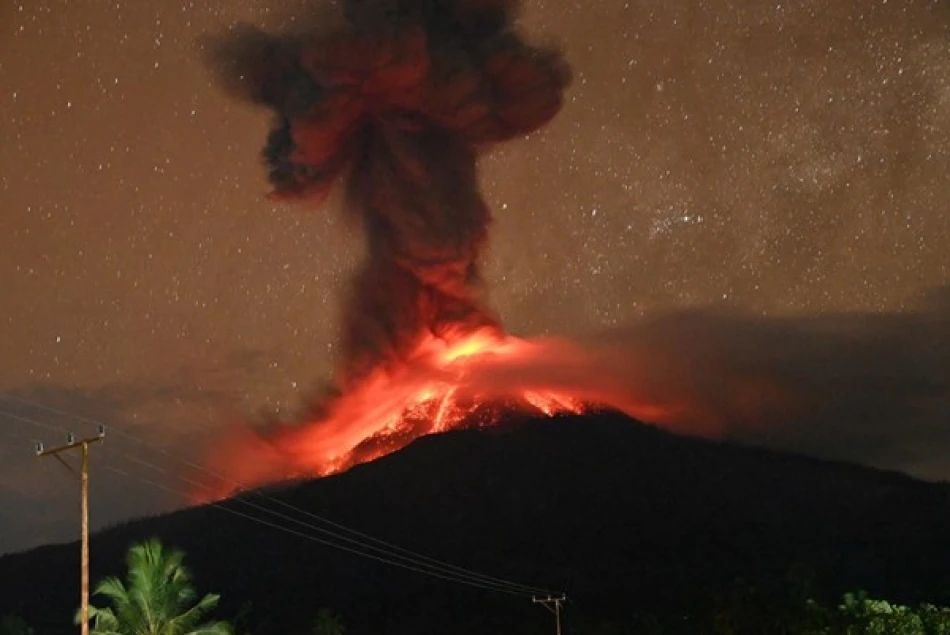
Indonesian Volcano Mount Lewotolbi Erupts, Spewing Ash and Lava
Indonesian Volcano Erupts Three Times in Two Hours as Authorities Maintain Highest Alert Level
Mount Lewotobi Laki-Laki volcano in Indonesia's Wulanjerang region erupted three times within two hours on Sunday morning, forcing authorities to keep the highest possible alert level in place. The back-to-back eruptions highlight Indonesia's ongoing struggle with volcanic activity along the Pacific Ring of Fire, where 130 active volcanoes pose constant threats to millions of residents.
Triple Eruption Sequence Raises Concerns
Indonesia's Geological Agency recorded the eruptions at precisely 7:22 AM, 8:23 AM, and 9:01 AM local time. The timing suggests the volcano remains highly unstable, with pressure building and releasing in rapid succession.
This pattern of multiple eruptions in a short timeframe often signals that a volcano is far from settling down. The Center for Volcanology and Geological Hazard Mitigation, under the Ministry of Energy and Mineral Resources, continues monitoring the situation closely.
Maximum Alert Status Maintained
Mount Lewotobi Laki-Laki remains at alert level four - the highest on Indonesia's four-tier volcanic warning system. This classification means authorities consider an eruption imminent or already occurring, with significant threats to surrounding communities.
The sustained maximum alert level indicates officials see no signs of the volcanic activity decreasing. Most volcanoes that reach level four either experience major eruptions or remain dangerously active for extended periods.
Six-Kilometer Exclusion Zone Enforced
Authorities have established a six-kilometer radius exclusion zone around the volcano, warning residents and visitors to avoid all activities within this area. This distance reflects the potential reach of pyroclastic flows, volcanic bombs, and other deadly volcanic hazards.
The exclusion zone size suggests officials are preparing for potentially larger eruptions. Similar-sized evacuation zones have been used for other Indonesian volcanoes that later produced significant eruptions affecting thousands of people.
Indonesia's Volcanic Challenge
Indonesia sits on the Pacific Ring of Fire, making it one of the world's most volcanically active countries. The archipelago hosts about 130 active volcanoes, more than any other nation.
Recent years have seen increased volcanic activity across Indonesia. Mount Merapi, Mount Sinabung, and Mount Agung have all produced major eruptions in the past decade, displacing communities and disrupting air travel across Southeast Asia.
Economic and Safety Implications
Volcanic eruptions in Indonesia typically force mass evacuations, disrupt agriculture, and impact tourism. The country's volcanic monitoring system has improved significantly since the 2004 Indian Ocean tsunami, but the sheer number of active volcanoes makes comprehensive monitoring challenging.
For local communities around Mount Lewotobi Laki-Laki, the sustained high alert level means continued uncertainty about when they might safely return to normal activities. Past Indonesian volcanic crises have sometimes lasted months, creating long-term displacement and economic hardship.
The rapid succession of Sunday's eruptions suggests Mount Lewotobi Laki-Laki could remain active for weeks or months ahead, keeping surrounding communities on edge and authorities on high alert.
Most Viewed News

 Layla Al Mansoori
Layla Al Mansoori






